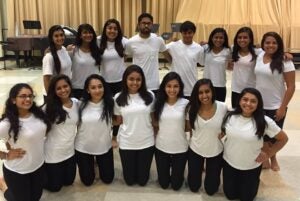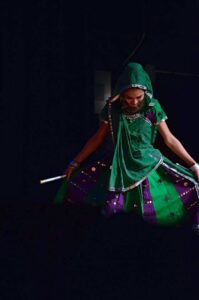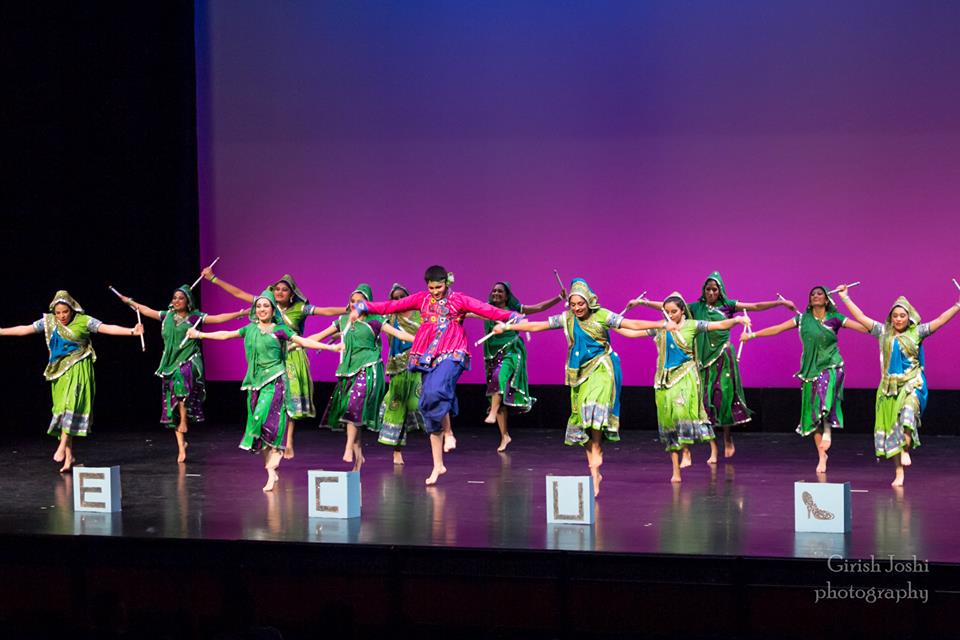October 16, 2015
Rallying for Raas: ECU's Newest Indian Dance Team
By: Jayati Vyas, Honors College Junior
For a dancer, this is more than just a string of consecutive numbers. It serves as a cue for the precise moment at which to begin dancing, so that your moves are in perfect tandem with the rhythm of the music. It provides the dancer with a clean slate, a chance to collect their thoughts before starting over and giving a particular segment another try.
In many ways, the manner in which Pirate Raas came to be is similar to this. For someone who had dedicated over 15 years of her life to learning and performing various Indian dance forms, choosing to attend a university that, at the time, did not offer much in terms of collegiate Indian dance teams was a hard pill to swallow. Nevertheless, I was hopeful. My good friend Raven Misra and I gave the idea of starting a raas team a considerable amount of thought, but we just couldn’t seem to get our hands on the resources we needed to create one. Also, many of the students on campus had close to no experience doing raas, which was an important aspect for us to consider if we were to start a team that had the potential to compete at national competitions. However, with the new academic year came an influx of students who had prior experience  with raas, one of whom, in particular, shared our aspirations. So when my soon-to-be co-captain, Mona Amin, called for an interest meeting for an “ECU raas team” in December of 2014, it was as if someone had said “5, 6, 7, 8!” and I found myself staring at an opportunity to give my dream another try.
with raas, one of whom, in particular, shared our aspirations. So when my soon-to-be co-captain, Mona Amin, called for an interest meeting for an “ECU raas team” in December of 2014, it was as if someone had said “5, 6, 7, 8!” and I found myself staring at an opportunity to give my dream another try.
‘Raas’ is a type of Indian folk dance that is native to Gujarat, a state located in the western region of India. It is typically danced by both men and women during the festival of ‘Navratri’, that occurs in October every year. Collegiate raas teams retain most parts of traditional raas, but make some modifications to the music and choreography in order to make their performances more exciting to watch. For this reason, there is a tremendous amount of effort that is put into generating creative steps, formations, and themes for a full raas routine.
 Mona attended the North Carolina School of Science and Math, where she formed and managed a raas team for two years. Although, I did not have prior experience leading a raas team, I had learned and performed ‘Bharatnatyam’ (a type of Indian classical dance) as well as raas almost my entire life. Thus, we both had a unique set of skills we brought to the table that helped us in collaborating and creating a dance team. Even then, it was inevitable that we would face a number of challenges as we worked hard to prepare the team for performances and competitions. We started off small: our first performance took place at Wahl-Coates Elementary School here in Greenville, NC. Before we knew it, we had already performed at Bhangra Sutra at UNC-CH, competed at East Coast Dhamaka at George Mason University in Virginia, were invited to compete in Las Vegas, and topped off our semester by coming in second place at Pirates Got Talent. As fortunate as we were to have these opportunities, there was so much more to it than we had imagined.
Mona attended the North Carolina School of Science and Math, where she formed and managed a raas team for two years. Although, I did not have prior experience leading a raas team, I had learned and performed ‘Bharatnatyam’ (a type of Indian classical dance) as well as raas almost my entire life. Thus, we both had a unique set of skills we brought to the table that helped us in collaborating and creating a dance team. Even then, it was inevitable that we would face a number of challenges as we worked hard to prepare the team for performances and competitions. We started off small: our first performance took place at Wahl-Coates Elementary School here in Greenville, NC. Before we knew it, we had already performed at Bhangra Sutra at UNC-CH, competed at East Coast Dhamaka at George Mason University in Virginia, were invited to compete in Las Vegas, and topped off our semester by coming in second place at Pirates Got Talent. As fortunate as we were to have these opportunities, there was so much more to it than we had imagined.
Pirate Raas not only gave me the opportunity to develop myself as a dancer and a leader, but also helped perpetuate my passion for dance. Now, with the team being a mix of returning and new members, we are looking forward to a year full of exciting new endeavors. So here’s to starting over, a cleaner slate, and yet another try. Ready? 5, 6, 7, 8!
- Categories:
- Honors College
- Uncategorized


